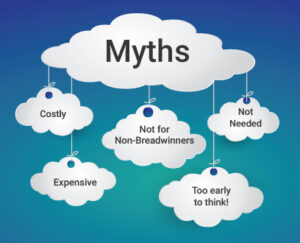How to Choose the Right Home and Auto Insurance for Your Family’s Needs
When it comes to protecting your home, your car, and your family, having the right insurance coverage is crucial. Insurance policies serve as a safety net, ensuring that if the unexpected happens—whether it’s an accident, damage to your home, or a theft—you’re not left financially vulnerable. However, choosing the right home and auto insurance can be a daunting task with so many options available. This guide will help you navigate the process and make informed decisions that best fit your family’s needs.
Why You Need Home and Auto Insurance
Before diving into the specifics of how to choose the right policies, it’s important to understand the value of both home and auto insurance.
Homeowners Insurance protects your house and personal belongings from risks such as fire, theft, or natural disasters. It also provides liability coverage in case someone gets injured on your property. Without homeowners insurance, you would bear the full financial burden of repairs or replacements in the event of a catastrophe.
Auto Insurance, on the other hand, protects you and your vehicle against accidents, theft, or vandalism. It also covers medical expenses if you or a passenger is injured during a crash. In many states, car insurance is required by law, and having the right policy ensures that you’re financially protected in case of an accident.
Steps to Choose the Right Home and Auto Insurance
1. Assess Your Needs
The first step in choosing the right home and auto insurance is to assess your needs. Your situation will dictate the types and levels of coverage required for both your home and your car.
For home insurance, think about:
- The value of your home: A higher-value home may require more coverage to fully protect your property and assets.
- The contents of your home: Are your personal belongings valuable (e.g., electronics, jewelry, antiques)? If so, you might need additional coverage for your personal property.
- Risk factors: Consider the risks in your area. If you live in an area prone to floods, earthquakes, or wildfires, you might need specialized coverage beyond a standard homeowners policy.
For car insurance, consider:
- The age of your car: Older vehicles may not require as much coverage as newer ones.
- Your driving habits: Do you drive long distances regularly, or do you mostly drive in city traffic? Your level of exposure to accidents can affect your coverage needs.
- Your budget: It’s important to balance adequate coverage with affordable premiums. Look for cheap insurance options that don’t skimp on essential coverage.
2. Get Multiple Car Insurance Quotes and Home Insurance Quotes
Once you have a clear idea of your coverage needs, it’s time to start shopping for insurance. The best way to find the right home and auto insurance is to get car insurance quotes and home insurance quotes from multiple providers. Many auto and home insurance companies offer free online quotes, allowing you to compare different policies, coverage limits, and premiums.
When comparing quotes, pay attention to the details:
- Coverage options: Ensure that the quotes include the coverage you need, such as liability, collision, comprehensive, and personal injury protection (for auto insurance) or dwelling, personal property, and liability coverage (for homeowners insurance).
- Deductibles: A higher deductible can lower your premiums, but you’ll need to pay more out of pocket if you file a claim.
- Discounts: Many insurance companies offer discounts for bundling home and auto policies, maintaining a clean driving record, or installing safety features in your home or car.
It’s important to not only focus on the lowest price but also consider the quality of the coverage and the company’s reputation.
3. Consider Bundling Home and Auto Insurance
One of the easiest ways to save money on both home and auto insurance is by bundling your policies. Many auto and home insurance companies offer discounts for customers who combine their home and car insurance into one policy. This can significantly lower your overall premiums and simplify the management of your policies.
Before committing to a bundle, make sure you compare the costs of separate policies versus a bundled policy. Sometimes, bundling can save you more money, but it’s important to do the math and see which option provides the best value for you.
4. Look for Affordable Home Insurance and Comprehensive Coverage
While everyone wants affordable home insurance, it’s important not to compromise on coverage to save a few dollars. A policy with low premiums may come with high deductibles or insufficient coverage, leaving you vulnerable in case of a claim.
Consider the following when looking for affordable home insurance:
- Choose a higher deductible: If you can afford a higher out-of-pocket expense in the event of a claim, opting for a higher deductible can lower your premiums.
- Review the policy limits: Ensure that the coverage limits are sufficient to fully protect your home and possessions.
- Ask about discounts: Some insurers offer discounts for installing smoke detectors, security systems, or other safety features in your home.
5. Understand the Types of Auto Insurance
There are several types of auto insurance coverage to choose from. The right coverage for you will depend on your specific needs and circumstances.
- Liability Insurance: This is the most basic type of auto insurance required by law in most states. It covers damages to other people and their property if you’re at fault in an accident.
- Collision Insurance: This covers damage to your own vehicle in the event of a crash, regardless of fault.
- Comprehensive Insurance: This covers non-collision incidents like theft, vandalism, or natural disasters.
- Personal Injury Protection (PIP): This helps pay for medical expenses for you and your passengers if you’re injured in an accident, regardless of fault.
If you’re looking for the best car insurance, make sure to assess your needs and opt for a combination of coverage types that suits your lifestyle.
If you need insurance for a short-term period, consider looking into temporary car insurance. This type of coverage can be ideal if you’re borrowing a car or driving a rental for a short time. Temporary car insurance policies usually have a much shorter duration than regular policies and can save you money if you don’t need long-term coverage.
6. Check the Reputation of Car Insurance Companies and Homeowners Insurance Providers
A good insurance policy is only as valuable as the company behind it. Before choosing an insurance provider, research the reputation of car insurance companies and homeowners insurance providers. Look for reviews, customer satisfaction ratings, and financial stability. A company with a strong reputation for paying claims promptly and providing excellent customer service is more likely to be reliable when you need them the most.
Some reputable auto insurance companies and home insurance companies are known for offering excellent service and competitive rates, so be sure to check their ratings with organizations like J.D. Power, A.M. Best, and the Better Business Bureau.
7. Pay Attention to Policy Exclusions
Every insurance policy comes with exclusions—things that are not covered under the policy. When reviewing your house insurance quote or auto insurance quote, make sure you understand what’s excluded from coverage.
For example, most standard homeowners insurance policies don’t cover flood damage, so you may need to purchase additional flood insurance if you live in a flood-prone area. Similarly, most car insurance companies may not cover rental car expenses, so you might need to opt for extra coverage if you plan to rent a car.
Be sure to ask the insurer about any exclusions and decide whether you need additional coverage or a rider for specific risks.
Conclusion
Choosing the right home and auto insurance for your family’s needs requires careful consideration of several factors, including coverage options, premiums, and the reputation of the insurance providers. By assessing your needs, getting multiple car insurance quotes and home insurance quotes, and considering bundling options, you can find an affordable and comprehensive insurance plan that offers peace of mind. Whether you’re looking for cheap insurance or the best car insurance, always make sure your policies provide adequate protection for your home, car, and loved ones. Protecting your family starts with the right insurance choices!





